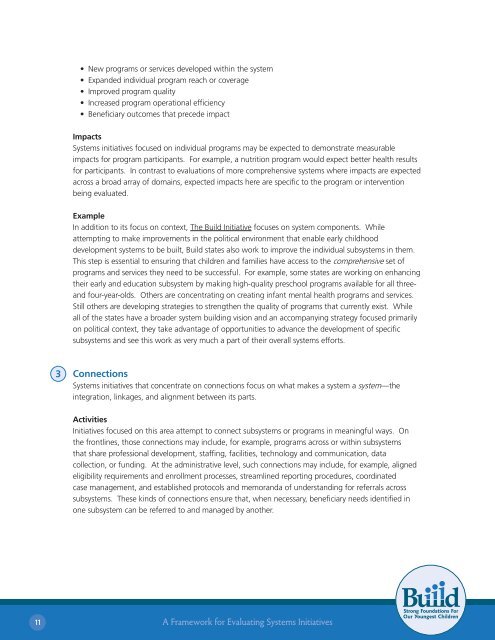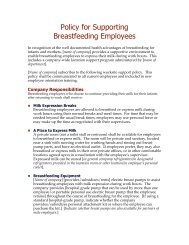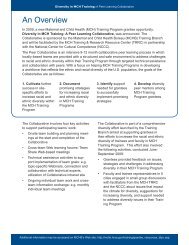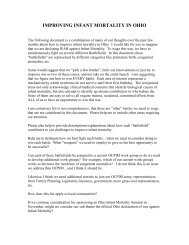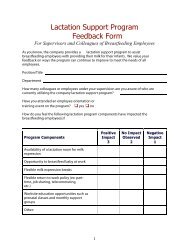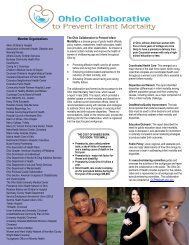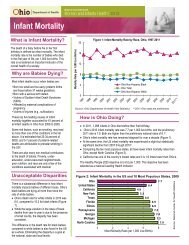A Framework for Evaluating Systems Initiatives
A Framework for Evaluating Systems Initiatives
A Framework for Evaluating Systems Initiatives
- No tags were found...
Create successful ePaper yourself
Turn your PDF publications into a flip-book with our unique Google optimized e-Paper software.
• New programs or services developed within the system• Expanded individual program reach or coverage• Improved program quality• Increased program operational efficiency• Beneficiary outcomes that precede impactImpacts<strong>Systems</strong> initiatives focused on individual programs may be expected to demonstrate measurableimpacts <strong>for</strong> program participants. For example, a nutrition program would expect better health results<strong>for</strong> participants. In contrast to evaluations of more comprehensive systems where impacts are expectedacross a broad array of domains, expected impacts here are specific to the program or interventionbeing evaluated.ExampleIn addition to its focus on context, The Build Initiative focuses on system components. Whileattempting to make improvements in the political environment that enable early childhooddevelopment systems to be built, Build states also work to improve the individual subsystems in them.This step is essential to ensuring that children and families have access to the comprehensive set ofprograms and services they need to be successful. For example, some states are working on enhancingtheir early and education subsystem by making high-quality preschool programs available <strong>for</strong> all threeandfour-year-olds. Others are concentrating on creating infant mental health programs and services.Still others are developing strategies to strengthen the quality of programs that currently exist. Whileall of the states have a broader system building vision and an accompanying strategy focused primarilyon political context, they take advantage of opportunities to advance the development of specificsubsystems and see this work as very much a part of their overall systems ef<strong>for</strong>ts.3Connections<strong>Systems</strong> initiatives that concentrate on connections focus on what makes a system a system—theintegration, linkages, and alignment between its parts.Activities<strong>Initiatives</strong> focused on this area attempt to connect subsystems or programs in meaningful ways. Onthe frontlines, those connections may include, <strong>for</strong> example, programs across or within subsystemsthat share professional development, staffing, facilities, technology and communication, datacollection, or funding. At the administrative level, such connections may include, <strong>for</strong> example, alignedeligibility requirements and enrollment processes, streamlined reporting procedures, coordinatedcase management, and established protocols and memoranda of understanding <strong>for</strong> referrals acrosssubsystems. These kinds of connections ensure that, when necessary, beneficiary needs identified inone subsystem can be referred to and managed by another.11A <strong>Framework</strong> <strong>for</strong> <strong>Evaluating</strong> <strong>Systems</strong> <strong>Initiatives</strong>


